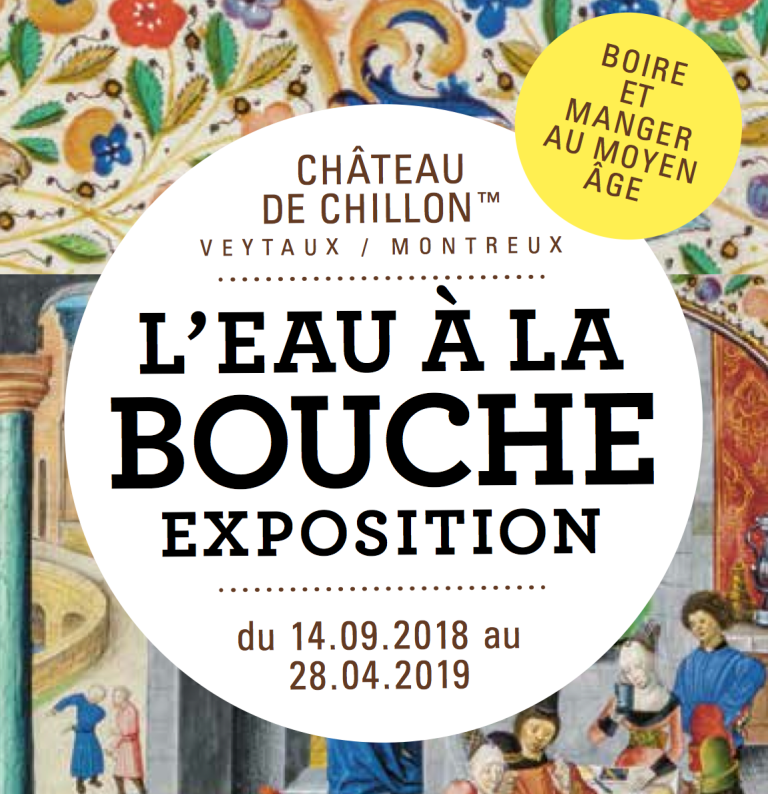A new temporary mouthwatering exhibition related to eating and drinking in the middle ages takes place at the Château de Chillon from the 14th September 2018 to the 28th April 2019.
During the opening on September 14th, a medieval buffet was offered to visitors, composed by wild boar jams, mushrooms, herbs pie, and other delicacies. Brasserie Dr Gabs has concocted a medieval beer without hovel for the occasion, Badoux wines organized a surprising middle ages wine tasting (among them the Hippocras spiced wine), and the Castle served its own wines. Surely a mouth-watering feast to launch this exceptional exhibition!
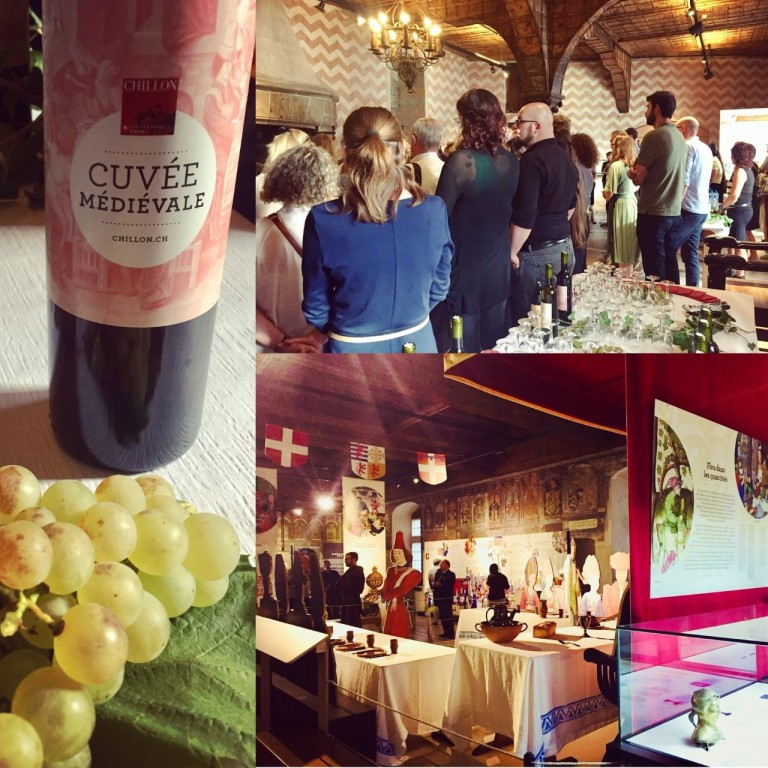
Marta Sofia dos Santos, Director of the Castle, unveiled in her speech a menu that promises to be rich in cultural events such as: lecture series, educational workshops, feasts, medieval tasting sessions and shows.
Visiting the exhibition I found that there are exceptional objects on display such as historical artefacts from archaeological excavations conducted at the castle in the end of the nineteenth century, cutlery and crockery, registers, coins, cookware, and six original manuscripts dating from the 11th to the 15th century.
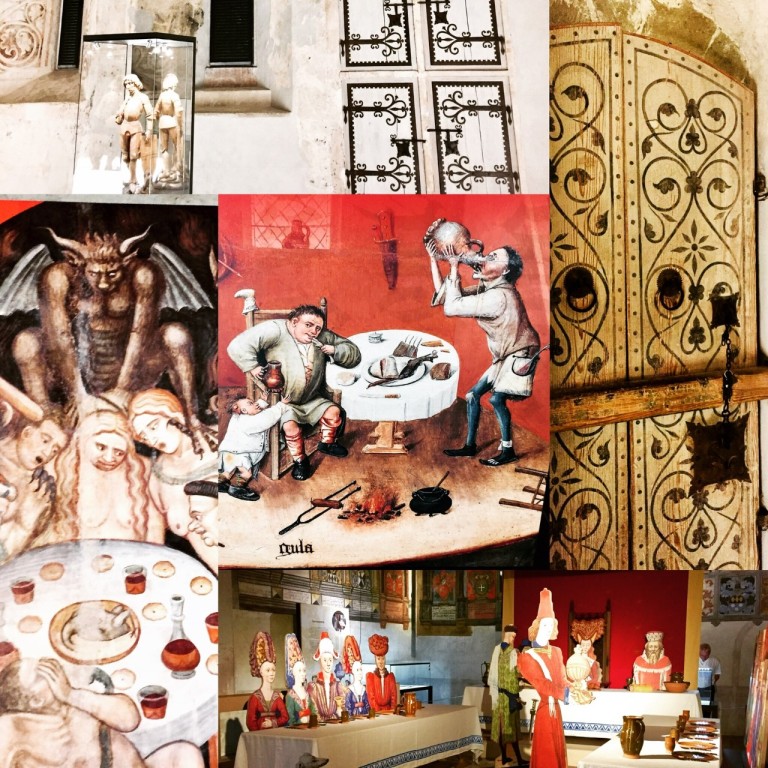
Unique in the world and loaned exceptionally by the Valais Mediatheque (Sion), Maître Chiquart’s (Amadeus VIII the Duke of Savoy’s head chef) only preserved fascinating manuscript “Du fait de cuisine” (From the Fact of Cooking) written in 1420, tells visitors not only about recipes but the amazing amounts of food needed to prepare feasts for around 200 people. Believe me, his gargantuan lists of ingredients make it clear that in the Middle Ages it was inappropriate to count calories! It contains a scary large palette of animal species in hundreds. At that times, people consume 6000 calories and 2-3 litres of wine per person daily!
A daily noon menu was composed by two services of seven dishes of fish (including dolphin, the king of the fishes and the most appreciated dish, symbol of status) and seven dishes of meat EACH (birds served with its feathers and wild boar heads with teeth on fire…), only interrupted by… More food! All complemented of course with plenty of wine… Bon appétit!
At the end, the “fountain of love” culminates this bacchanalia. It had the shape of a castle and was carried by four men. Its four towers contain a wild boar, a fish, a piglet and a swan. In the centre, rose water and white wine spring from a fountain of love, a sign of the largess and abundance of the Duke of Savoy. (Could this be the great great mother of nowadays Chinese fondue…?)
The visitors will surely be surprised about all the history of Middle Ages food and can also learn more about etiquette, tableware, cleanliness, and table manners in that time. They will also find out why children drank wine and what sorts of food acted as markers for social status. Also why your senses come to life when you taste with your eyes first.
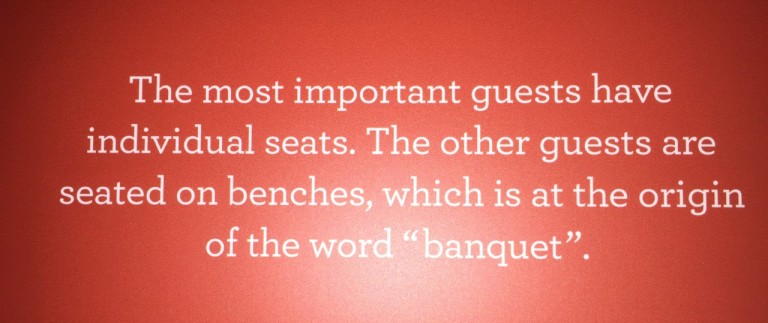
The colours, spices and sauces were very important in Middle Ages’ dishes. Been gold, azure (blue), gule (red), and silver the most appreciated ones. Yellow is the dominant colour gradually replaced by gold, a socially rewarding colour. Saffron, cinnamon and nutmeg create this much-coveted colour, while on less rich tables, egg yolk gives this illusion. Gold is without a doubt the colour Chiquart uses the most: 18 pounds (8.8 kilos) of gold leaf must be bought for the preparation of his banquet. For azure, the cook uses orchil lichen, a variety of lichen of the orseilles family, source of a blue or red dye according to the acidity of the mixture. For red, Chiquart uses organite or orcanette, a plant of the borraginae family whose dark red root provides a colouring material. For the silver colour, he uses starch. Green was obtained from different herbs. All this nourishing information awakes my interest in playing like and alchemist in my kitchen!
Thanks to Drako, the castle dragon, the young visitors will also be accompanied in their discovery of medieval food. A well thought booklet full of interesting activities will accompany them during their visit.
A cycle of conferences, mostly a discourse of philosophers to establish the nature of food in society, is organized during the exhibition. You can check the themes and calendar at Chateau de Chillon’s website.
A gourmet visit to participate in an original guided tour that nourishes the mind and the stomach takes place the first Sunday of the month at 11am, from October 7th. Price: CHF 15.- (6-16 years), CHF 35.- (from 16 years old) Reservations: http://www.chillon.ch, info@chillon.ch, 021 966 89 10. Activities in French every 1st Sunday of the month. Activities in English on Sundays 03.02.2019 and 03.03.2019.
The richly illustrated catalogue of the exhibition, written by the scientific curator of the exhibition Dr. Eva Pibiri, is on sale at the shop at CHF 25.-
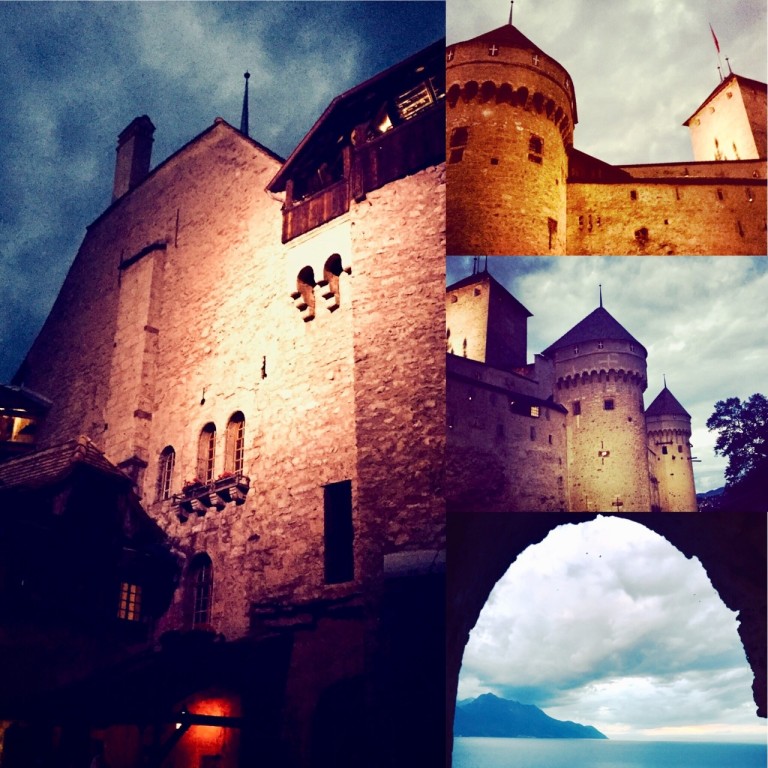
PRACTICAL INFORMATION:
Self-guided visit: CHF 6.- (child), CHF 12.50 (adult)
Tickets: http://www.chillon.ch or at the cash desk.
Guided Tour “Water in the mouth” French, English, German. 60 min.: CHF 90.- TTC + admission price per pers. or in costume CHF 140.- TTC + admission price per pers.
